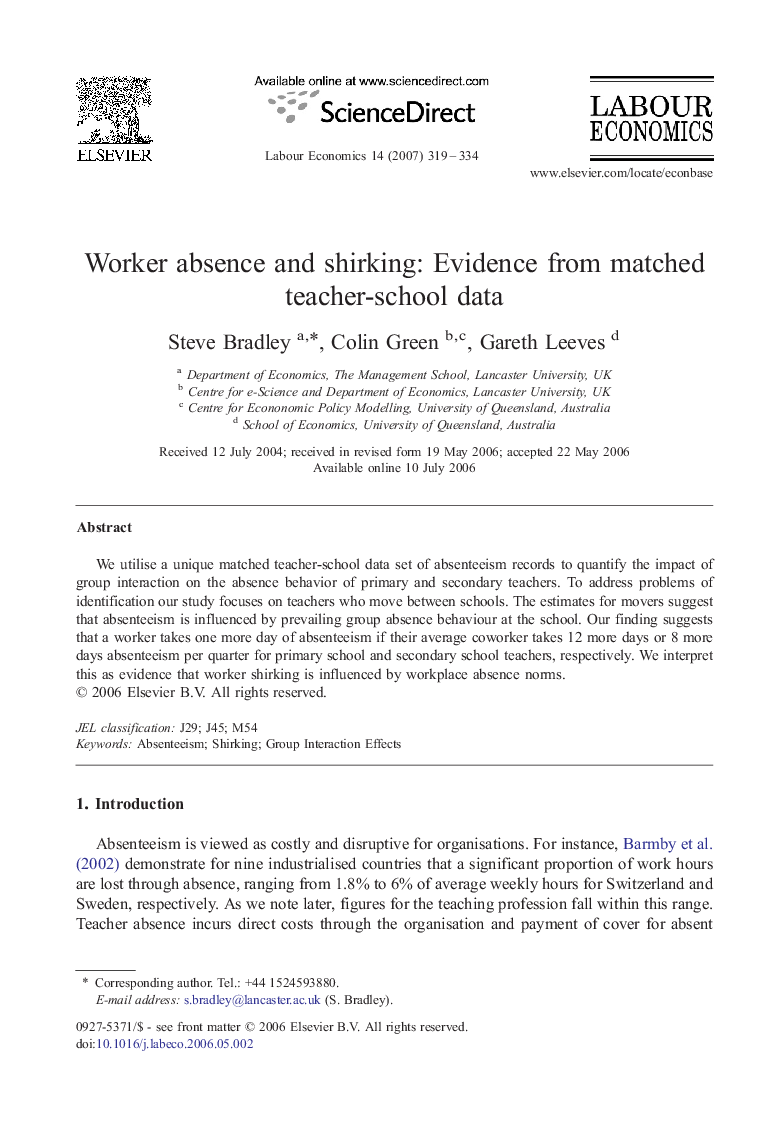| Article ID | Journal | Published Year | Pages | File Type |
|---|---|---|---|---|
| 971774 | Labour Economics | 2007 | 16 Pages |
Abstract
We utilise a unique matched teacher-school data set of absenteeism records to quantify the impact of group interaction on the absence behavior of primary and secondary teachers. To address problems of identification our study focuses on teachers who move between schools. The estimates for movers suggest that absenteeism is influenced by prevailing group absence behaviour at the school. Our finding suggests that a worker takes one more day of absenteeism if their average coworker takes 12 more days or 8 more days absenteeism per quarter for primary school and secondary school teachers, respectively. We interpret this as evidence that worker shirking is influenced by workplace absence norms.
Related Topics
Social Sciences and Humanities
Economics, Econometrics and Finance
Economics and Econometrics
Authors
Steve Bradley, Colin Green, Gareth Leeves,
